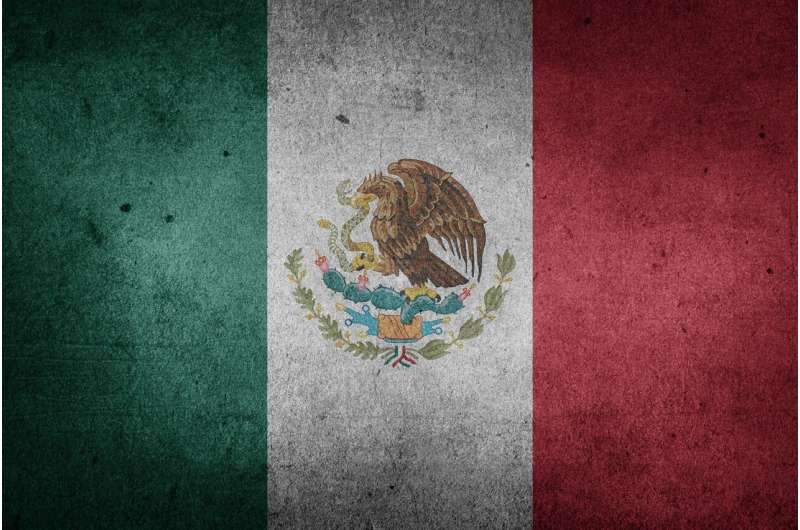
Credit: Pixabay/CC0 Public Domain
The expansion of the Mexico-US border wall crossing has been accompanied by a rising toll of serious injuries, with poor discharge care and a lack of appropriate interpreting facilities adding up to a “humanitarian and health crisis,” suggest researchers in the open access journal Trauma Surgery & Acute Care Open.
Thirty eight different nationalities and 21 languages other than Spanish were represented among those attempting to cross one segment of the wall in 2021 and 2022, say the researchers.
The Mexico-US border wall was extended by 50 miles and raised to a height of 30 feet in Southern California, construction of which was completed in 2019, they explain.
Since then, trauma centers in Southern California have reported an increase in the numbers and severity of cerebrovascular, orthopedic, and spinal injuries caused by border wall falls, they add.
To obtain a clearer picture of the nationalities of injured migrants and what happens to them after hospital treatment, the researchers retrospectively reviewed the hospital and medical records of injured patients admitted to an academic, Level 1 Trauma Center after attempting to cross one section of the US-Mexico border wall in 2021 and 2022.
They identified 597 patients who were injured while crossing the San Diego segment of the US-Mexico border wall from 38 different countries. Their average age was 32, and three out of four (446; 75%) were men.
Just over two thirds (405; 68%) were Mexican. Of the rest, nationals from Peru (23; 4%), India (17; (3%), El Salvador (14; just over 2%) Cuba (13; just over 2%), Jamaica (12; 2%), and Somalia (12; 2%) were the most heavily represented. But migrants also came from Europe, Asia, and the Middle East.
“Multidisciplinary services are needed to effectively treat patients who present with complex injuries sustained at the border. Patients often require multispecialty trauma care, multiple procedures, operative interventions, and physical and occupational therapy—all of which necessitate the use of significant hospital resources,” note the researchers.
But despite the high level of care required during their inpatient stay, many of these patients don’t receive appropriate follow-up care after their hospital discharge, they add.
“In San Diego, for example, most border fall patients are discharged with relatives or to border custody, despite significant disability that would typically require inpatient rehabilitation.
“In El Paso, Texas, the trauma system noted a similar trend and described a mere 12% patient follow-up in clinic despite more than 90% of these patients having undergone surgery.”
The researchers found that most patients (74%) were discharged within the US. But discharge destinations were dispersed widely throughout the country.
California was the most common state of discharge (49%), with just over 15% of all patients discharged within the San Diego region. New York was the destination for just over 5%, followed by Florida (just over 3%). Another 20% were discharged to law enforcement custody, and 4% were discharged back to Mexico.
This means that most (85%) of migrants were discharged outside the San Diego area, despite having an average Injury Severity Score of 8, say the researchers, adding that follow-up rates were low even for those discharged to San Diego.
“This lack of follow-up care means that post-operative complications might go unrecognized and rehabilitative therapy might be deferred, all hampering the recovery from potentially disabling injuries,” they point out.
“[It] highlights the need for careful clinical consideration on discharge, with particular attention paid to detailed written and verbal instructions, discharge with all medications, and use of absorbable sutures when possible, given the challenges to postoperative follow-up,” they add.
They acknowledge that their analysis was limited to one trauma center, serving one segment of the US-Mexico border wall. As such, the findings can’t be extrapolated to trauma centers serving different segments of the border wall, they say. And the data only captures patients who were injured in 2021 and 2022.
But they conclude, “Overall, our study characterizes the global nature of the public health and humanitarian crisis unfolding at the southern United States border and demonstrates the diverse patient population associated with border fall injuries—represented by five continents, 38 countries, 22 languages, and cross-country discharge destinations.”
A linked editorial points to the 10-fold increase in admissions for border wall falls since 2017, adding traumatic injury to the already established risks of migration such as heat and cold exposure.
“Fundamentally, these are preventable injuries. Current international policy and political circumstances along with US immigration policy and border conditions drive migration and put migrants at risk for harm during unauthorized border crossings. Interventions at all levels are necessary and indicated to reduce harm,” conclude the authors.
More information:
From across the globe – traumatic injuries are an international concern at the US-Mexico border wall, Trauma Surgery & Acute Care Open (2024). DOI: 10.1136/tsaco-2023-001308
Provided by
British Medical Journal
Citation:
Rising toll of serious injuries linked to expanded Mexico-US border wall crossing (2024, August 5)
retrieved 5 August 2024
from
This document is subject to copyright. Apart from any fair dealing for the purpose of private study or research, no
part may be reproduced without the written permission. The content is provided for information purposes only.
Source link : http://www.bing.com/news/apiclick.aspx?ref=FexRss&aid=&tid=66b1736c9a3449428e0dbbea095bd03a&url=https%3A%2F%2Fmedicalxpress.com%2Fnews%2F2024-08-toll-injuries-linked-mexico-border.html&c=12326974872643750274&mkt=en-us
Author :
Publish date : 2024-08-05 11:30:00
Copyright for syndicated content belongs to the linked Source.
